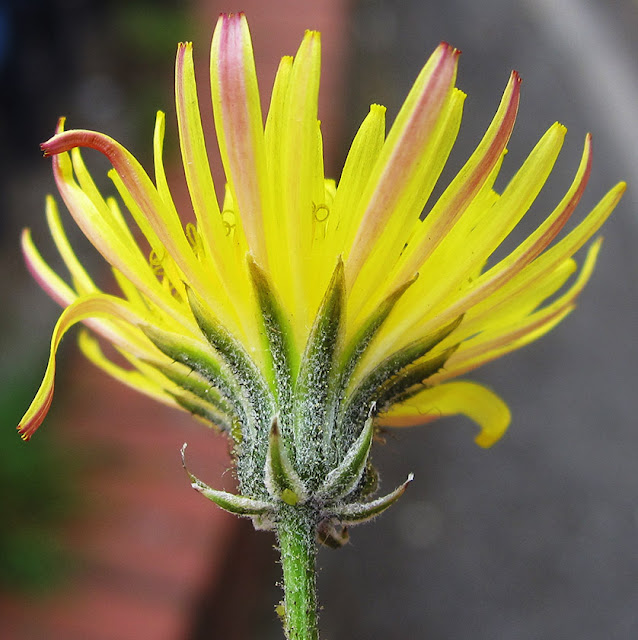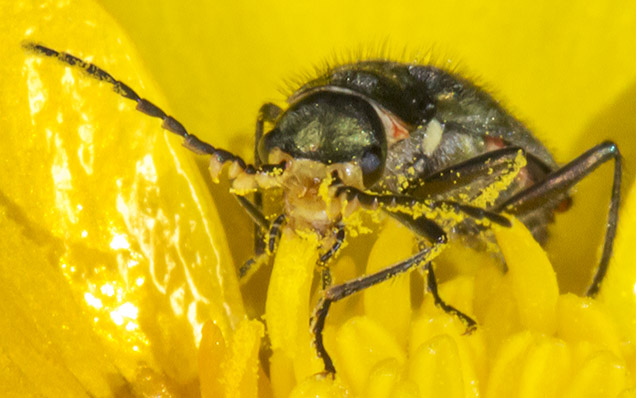 |
| Rough Hawkbit, Leontodon hispidus. High Elms Country Park, 2 June 2013. |
I have posted some flowers that are not Dandelions before. There are quite a few, including Hawkweeds, Hawkbits and Hawk's-beards, and it can be hard to tell them all apart, specially for non-botanists. Recently I was looking at some photographs in a London gallery, and there was one set that was supposed to represent the life cycle of a Dandelion; at least one was definitely not a Dandelion, being far too hairy.
Some of them dominate a particular field or area. At High Elms, there are Rough Hawkbits. They are generally very hairy, and have sepals that clasp the inflorescence.
 |
| Cat's-ear, Hypochaeris radicata. Spring Park, 5 June 2013. |
Cat's-ears can also fill a field. They do not have hairy stems, but they have little bracts at intervals up the flower-stem. The bracts around the inflorescence are arranged in helixes, like the Rough Hawkbit, and have a central row of soft prickles. The tips of the bracts are purple. (There are other features, but I am describing the ones you can see.)
 |
| Beaked Hawk's-beard, Crepis vesicaria. By Hayes Station car park, 12 June 2013. |
This Beaked Hawk's-beard tends to grow at the edges rather than everywhere. This one is in a crack at the edge of a road. The sepals are symmetrical rather than spiralled. It is downy rather than hairy, and has an outer ring of sepals that stand out, forming a neat ruff at the base of the flower. The outer surfaces of the outer florets are usually reddish.
So once you know what to look for, you can tell most of them apart quite easily. Of course, this is far from the full set, and you sometimes need to see the leaves as well. Also, some of them flower at different times of year. The true Dandelions have been going for a while, but these three are just at their peak now.














